125 Years of Service
•
Photos courtesy of the U-M Bentley Historical Library
As the Alumni Association celebrates its 125th year, Michigan Alum (formerly Michigan Alumnus) delved into its archives to pull out a selection of excerpts to highlight various key moments in the organization’s history.
Among them: the launch of innovative initiatives such as a travel program, Camp Michigania, and the LEAD Scholars program.
Some excerpts are enhanced with the present-day reflections of Bob Forman, MPA’59, who experienced many of these developments firsthand over his long career at the Association, including serving as executive director from 1966-94.
The Foundation
In 1892, there were six individual alumni groups across different schools. Representatives from these groups got together and formed one alumni organization that was independent of the University.
“For some years, the desire has been, in the hearts of any of the prominent Alumni of the University of Michigan, to unite the Alumni organizations of all the various departments into one general Alumni Association, which should unite the graduates, regardless of class or department, into one great body; that by united action, they might be able to accomplish some definite good for the University. At the last Commencement this was accomplished, and an association was formed, to be known as the ‘Alumni Association of the University of Michigan.’
“[…] The Alumni Association will be built around the family idea, and every effort will be made to cultivate just such a spirit among the great body of Alumni and former students, though scattered now to the four quarters of the globe, and their assistance in this work will be at all times duly appreciated.”
—Ralph C. McAllaster, x1887, “Announcement from the General Secretary,” Michigan Alumnus, November 1897
The Power of Print
Before the Alumni Association was formed, a magazine — this magazine — was launched. The Association purchased Michigan Alumnus and it has been a critical voice to keep alums informed about what is happening on campus and with their fellow Wolverines.
“There is need of a publication which shall keep former students in touch with each other and with Alma Mater. It is a deplorable fact that, with a body of living graduates and students larger than that of any other American University, only a few graduates retain any interest in the University or are ready to give it any aid in time of stress. The Michigan Alumnus will aim to remedy this defect in Alumni life. It will devote itself exclusively to the graduate and old student, give him concise and reliable reports of all that should still be attractive to him, discuss with him ‘ways and means,’ give him space and opportunity to suggest improvement or advise retrenchment in the management of our University,—and offers its pages freely as a means of friendly communication between old students of all departments of the University.”
—Michigan Alumnus founder Alvick A. Pearson, 1894, “By Way of Introduction,” Michigan Alumnus, October 1894
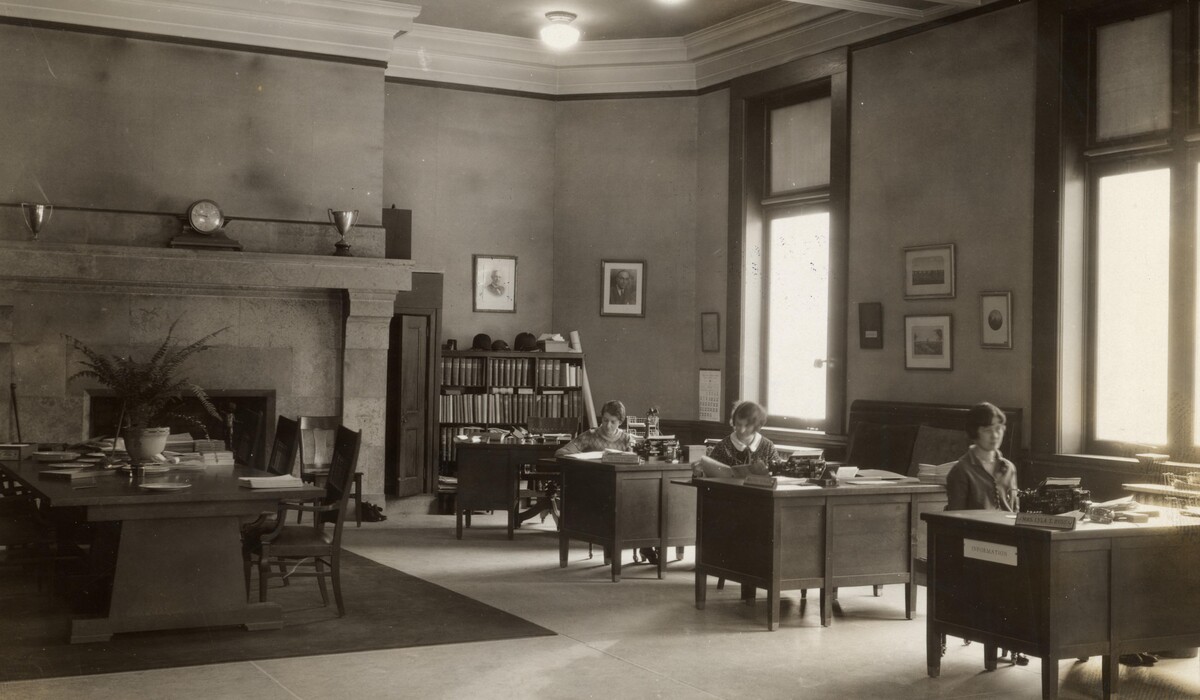
A Sense of Place
The organization was formed and a magazine was being printed, but the Alumni Association didn’t have a large, dedicated space until it moved into Alumni Memorial Hall (now home to the U-M Museum of Art). Throughout the years, the Association also had space in the Michigan Union before moving into the Alumni Center near Burton Memorial Tower in 1982.
“The Alumni Association expects to move into the new building as soon as it has been officially accepted by the Regents of the University. The main workroom of the Association will be in the basement, where fine quarters have been assigned to the Association. The Secretary of the Association will also have an office on the first floor, directly overhead, which will be connected with the editorial rooms of The Alumnus below. This room will be the headquarters of the alumni of the University, and will always be kept open for their use.”
—“The Opening of the Alumni Memorial Hall,” Michigan Alumnus, March 1910
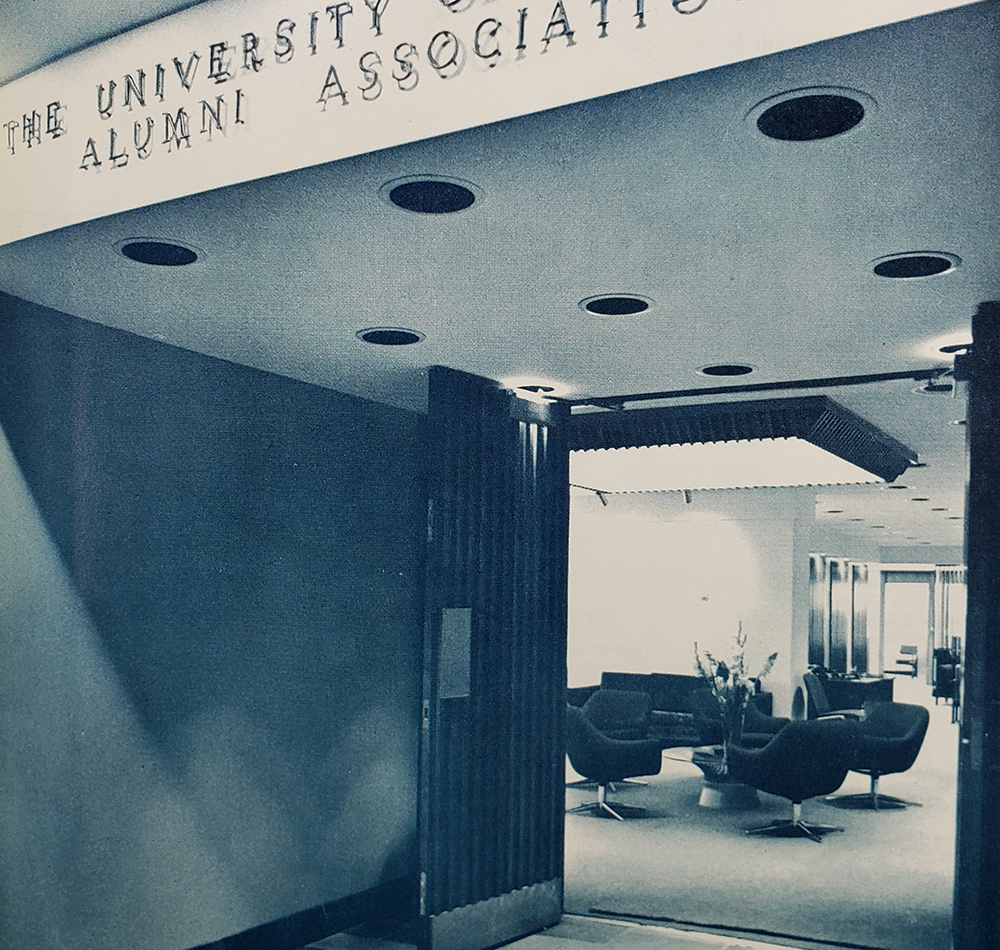
“[…] We are now located on the lower level of the Michigan Union in a space that once housed the swimming pool. Our floor space of 4,700 square feet is larger than the incredibly gerrymandered area we occupied across the street in Alumni Memorial Hall. That building, by the way, is now given over entirely to usage as the University’s Museum of Art.”
—“Come In—and Say Hello,” Michigan Alumnus, October 1967
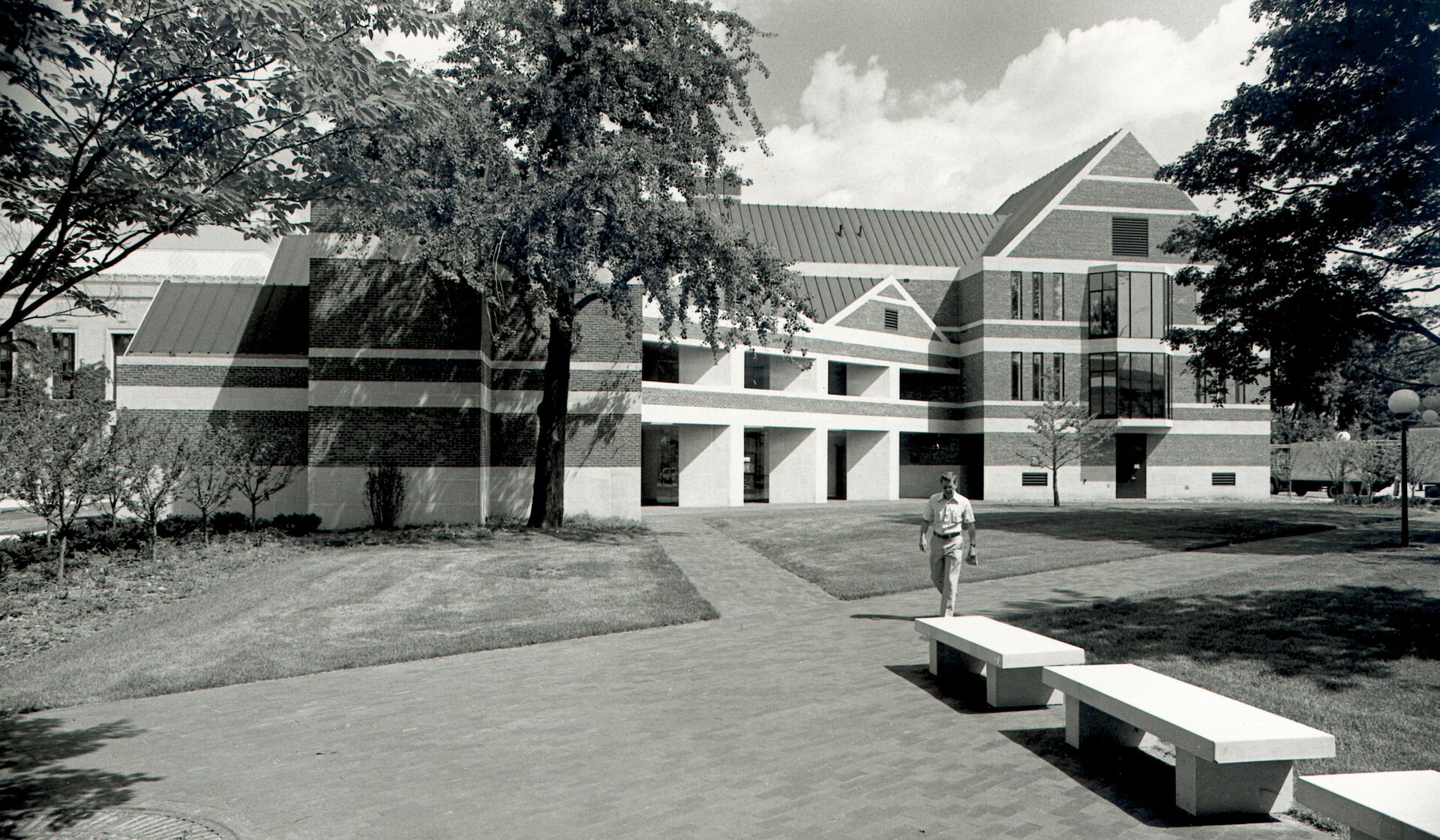
“Today, I am writing to you from my office in the new Alumni Center. It is our first day in the building and my colleagues and I are filled with the excitement and joy of this wonderful moment. […] I would hope that we can dedicate this building to assure the continued quality of this great University, to keep its doors open to men and women of exceptional ability regardless of economic and social status, and to provide an educated body of alumni able to serve the needs of society and to enjoy a quality of life second to none.”
—Bob Forman, “Moment for Michigan,” Michigan Alumnus, September 1982
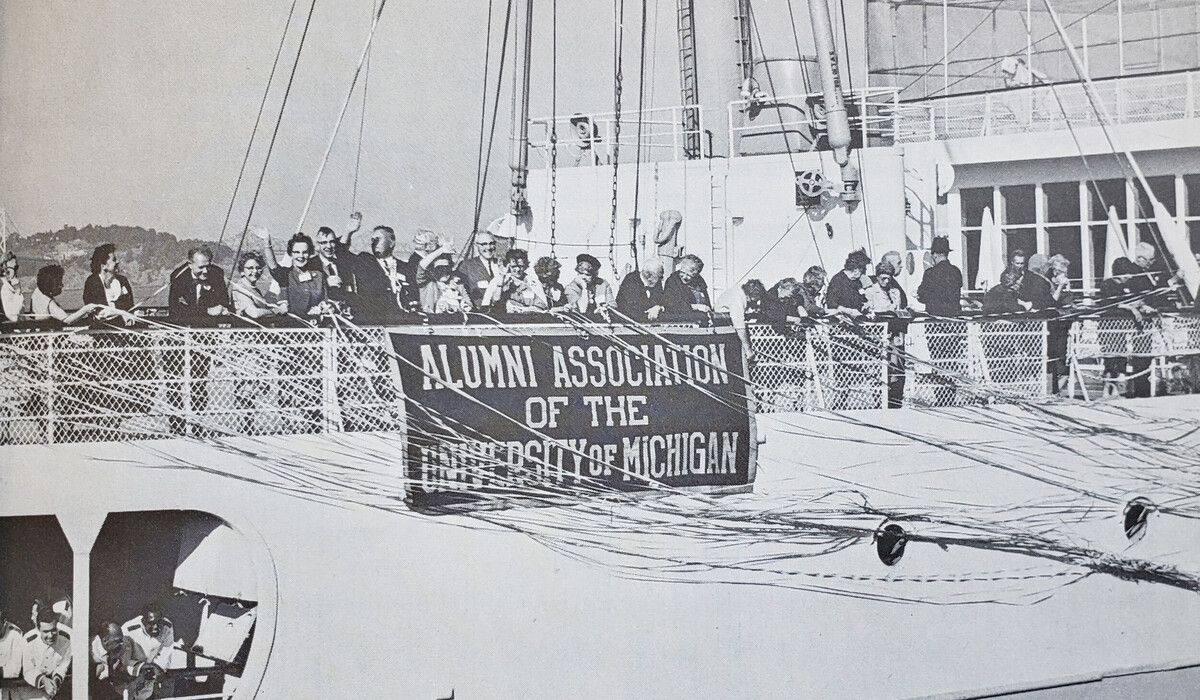
Enriching Travel
In 1962, the Alumni Association launched its tour program with trips to Central Europe and to Scandinavia-Russia. By October 1967, more than 1,600 alumni had participated in the tour program. The first bowl tour went to the 1965 Rose Bowl to see the Wolverines beat Oregon State 34-7. The Alumni Association was one of the first alumni organizations in the nation to have such a program.
“The most extensive trip thus far has been the 91-day Around the World cruise aboard the luxury liner S.S. President Roosevelt. It departed from San Francisco on Oct. 12, 1966, with some 126 loyal alumni singing The Yellow and Blue, made 24 stops and returned to San Francisco on Jan. 9, 1967. Never before had a university alumni group attempted such a journey. Judging by the response of those aboard, including [U-M] President and Mrs. Harlan Hatcher, it was an overwhelming success.”
—“Tour Program,” Michigan Alumnus, October 1967
Bob Forman Reflects
“1967 was the University’s 150th anniversary. In addition to celebrating with the 1966 around-the-world cruise, we also chartered an around-the-world flight for about 62 alumni. President Hatcher joined us for that, too.”
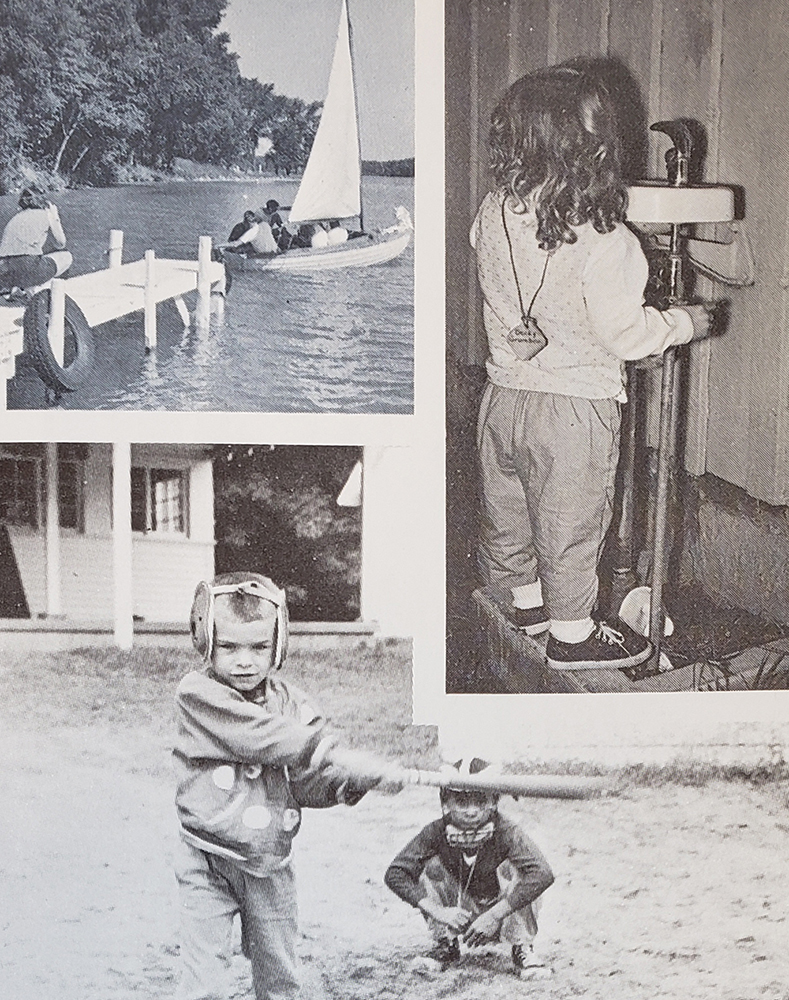
Family Camp Affair
Before the Alumni Association purchased what is now Camp Michigania, a group of alumni came together to launch a family camp program in 1961 at Douglas Lake. The aim was simple: have an enjoyable family getaway in a natural setting. Campers were able to take part in special activities or simply take it easy. Following a second year of family camp, the Alumni Association purchased what is now known as Camp Michigania.
“Plans are now underway to select a permanent site for the Family Camp. Last summer, the Alumni Association rented for two weeks the premises and facilities of the University’s Biological Station near Cheboygan after the summer session had ended. Unfortunately this facility could not be made available this year, so for this year’s program, the Alumni Association was compelled to rent two ‘limited-size’ camps for two weeks at the end of the summer in order to accommodate the many families who wanted to ‘pioneer’ in 1962.
“Camp Charlevoix, on Lake Charlevoix, will be operated for two one-week periods […]. Camp Huntingdon-Sherwood, on nearby Walloon Lake, will be in use for a single 10-day period, […]. At present, about 12 vacancies exist for families at the 10-day camp.”
—“Family Camp Plans Go Forward,” Michigan Alumnus, May 1962. By 1963, Camp Huntingdon-Sherwood would be re-christened Camp Michigania after the Association purchased it for $200,000.
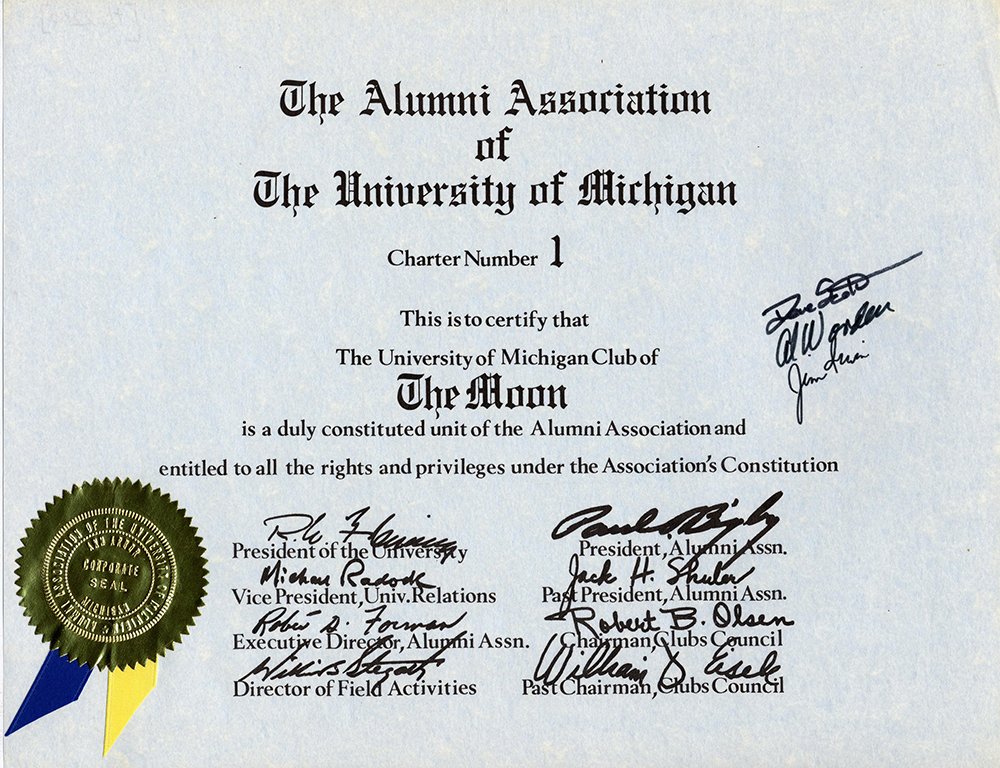
Lunar Spirit
U-M alums have had a deep connection with NASA and space exploration over the years, but none closer than Apollo 15 in 1971. During that mission, three U-M alums — David Scott, 1949-50, HDAS’71, James Irwin, MSE’57, HSCD’71, and Alfred Worden, MSE’63, HDAS’71 — went to the moon carrying a miniature U-M flag and a miniature of the seal of the U-M department of aerospace and engineering. The three formed the U-M Club of the Moon, which an article in the Alumnus joked “probably won’t meet very frequently.”
“About 100 U-M students, faculty and staff members traveled by chartered jet to Florida to watch the July 26 blast-off. U-M President Robben Fleming was also on hand. The National Aeronautics and Space Administration authorized special VIP viewing passes for the U-M group in honor of the first space mission ever to carry an entire crew who are alumni of one university.”
—“A Crater Named ‘Wolverine’,” Michigan Alumnus, September 1971
To See and to Lead
After Michigan voters outlawed the practice of taking race into consideration for higher-education admissions in the state, the number of Black, Latino, and Native American students on campus dramatically decreased. As an independent non-profit, the Alumni Association launched the merit-based LEAD Scholars program to provide financial and community aid to underrepresented minority students that were admitted to the University. Since 2008, more than 600 students have been in the program.
“For many alumni, the greatest lessons learned in Ann Arbor came not only from their outstanding professors, but from their fellow students. Diversity is a valued part of University life, and to maintain this rich asset, the Alumni Association has developed special scholarships for incoming students.”
—Andrea Cavanaugh, “Closing the Financial Gap,” Michigan Alumnus, Early Fall 2009
On Independence
While many alumni associations have been absorbed by their colleges and universities, the Alumni Association remains an independent organization.
Bob Forman Reflects
“This idea of an independent, self-governed alumni association was fairly popular in the ’60s. Of the [Big Ten] universities involved in alumni work in the ’60s, all but one were self-governed organizations. Now it’s no longer the case … most of them are parts of the university, not self-governed. The key to understanding the Alumni Association is to remind ourselves that this is an organization of the alumni of the University coming together to serve their alma mater. We ought to be proud of this Association and what it has done. Because I don’t think it’s only done the job for Michigan, but it’s provided leadership nationally and it’s been a model for alumni associations that want to manage their own affairs.”
GREGORY LUCAS-MYERS, ’10, is the senior assistant editor of Michigan Alum.



